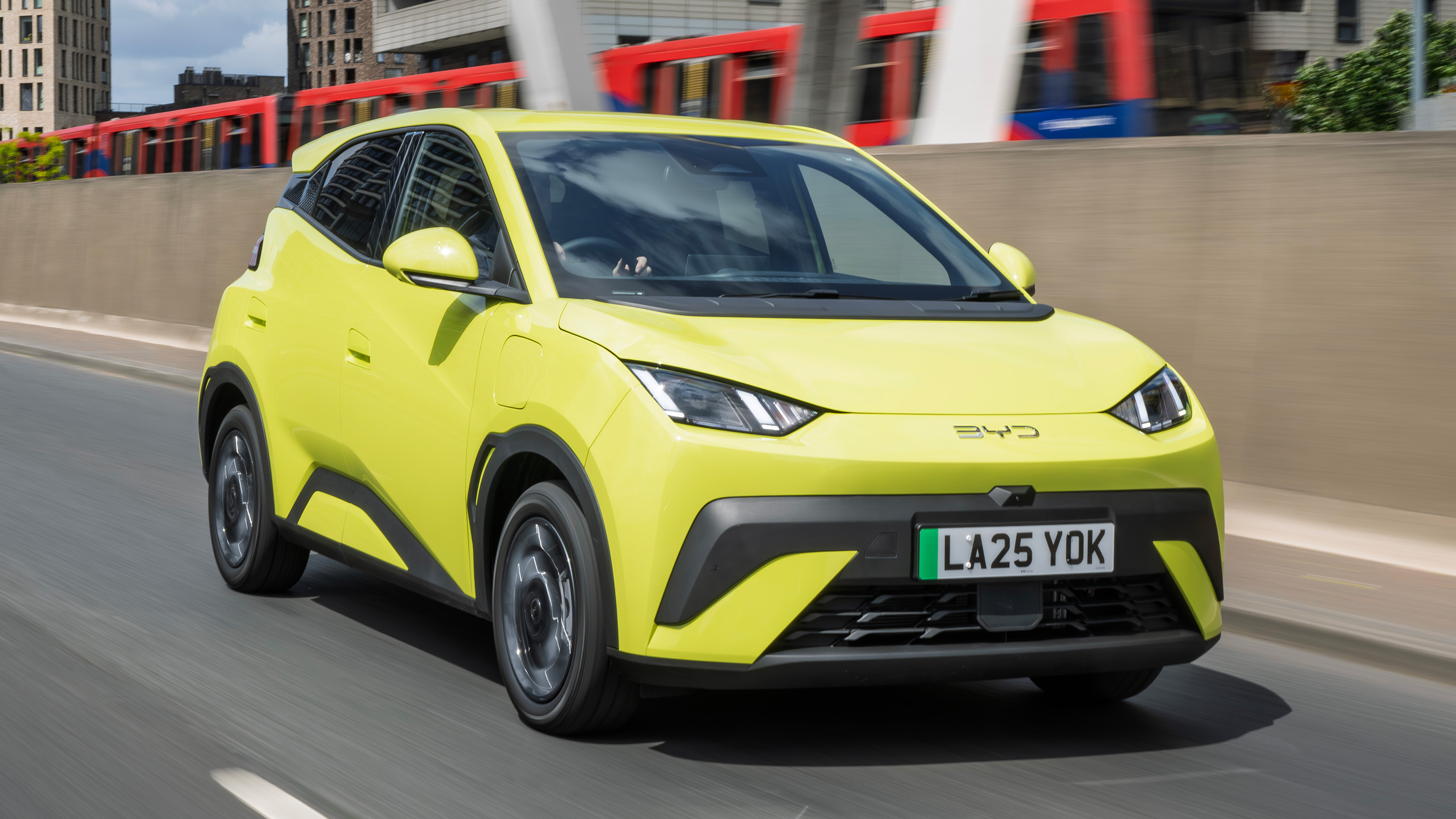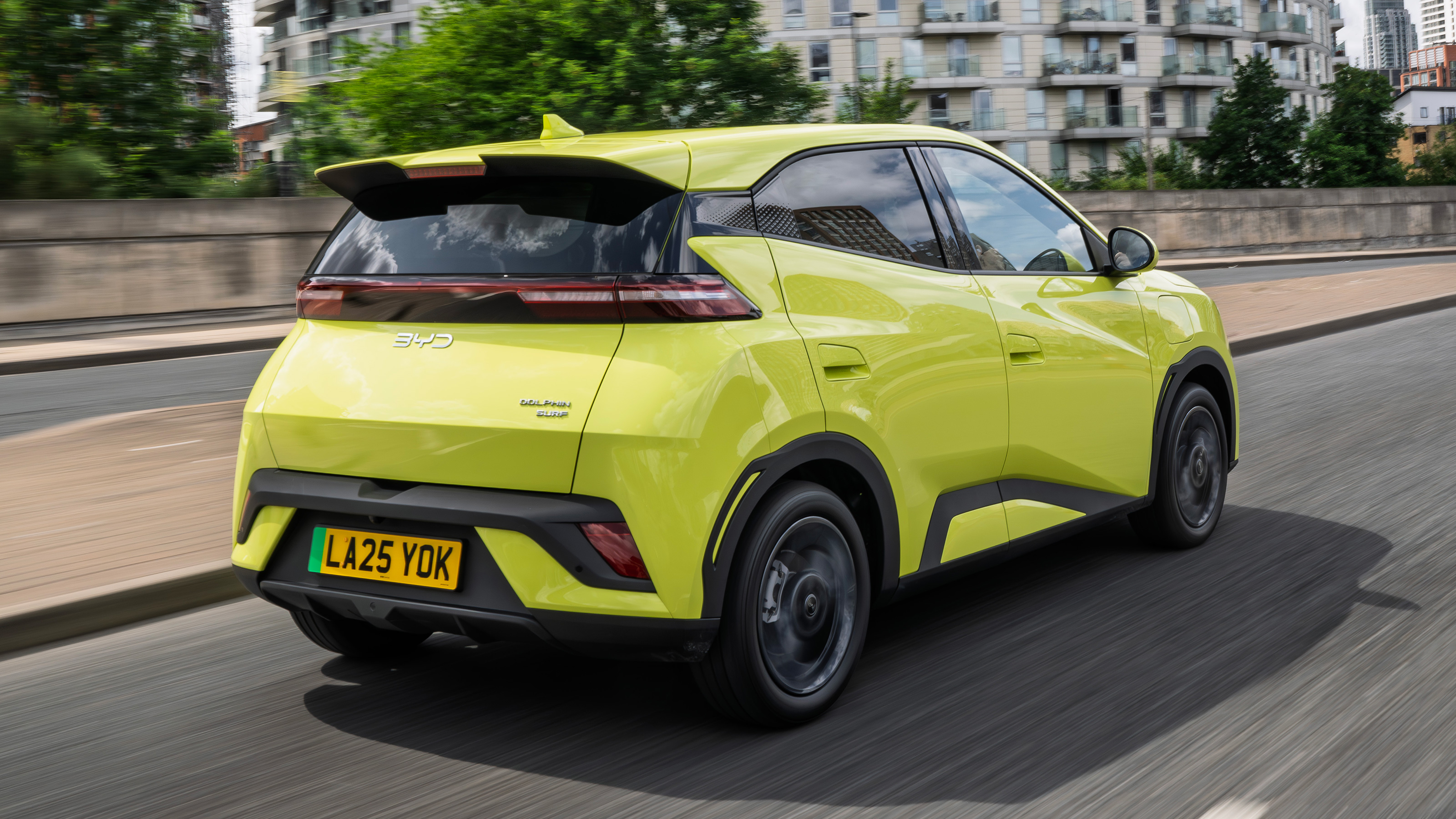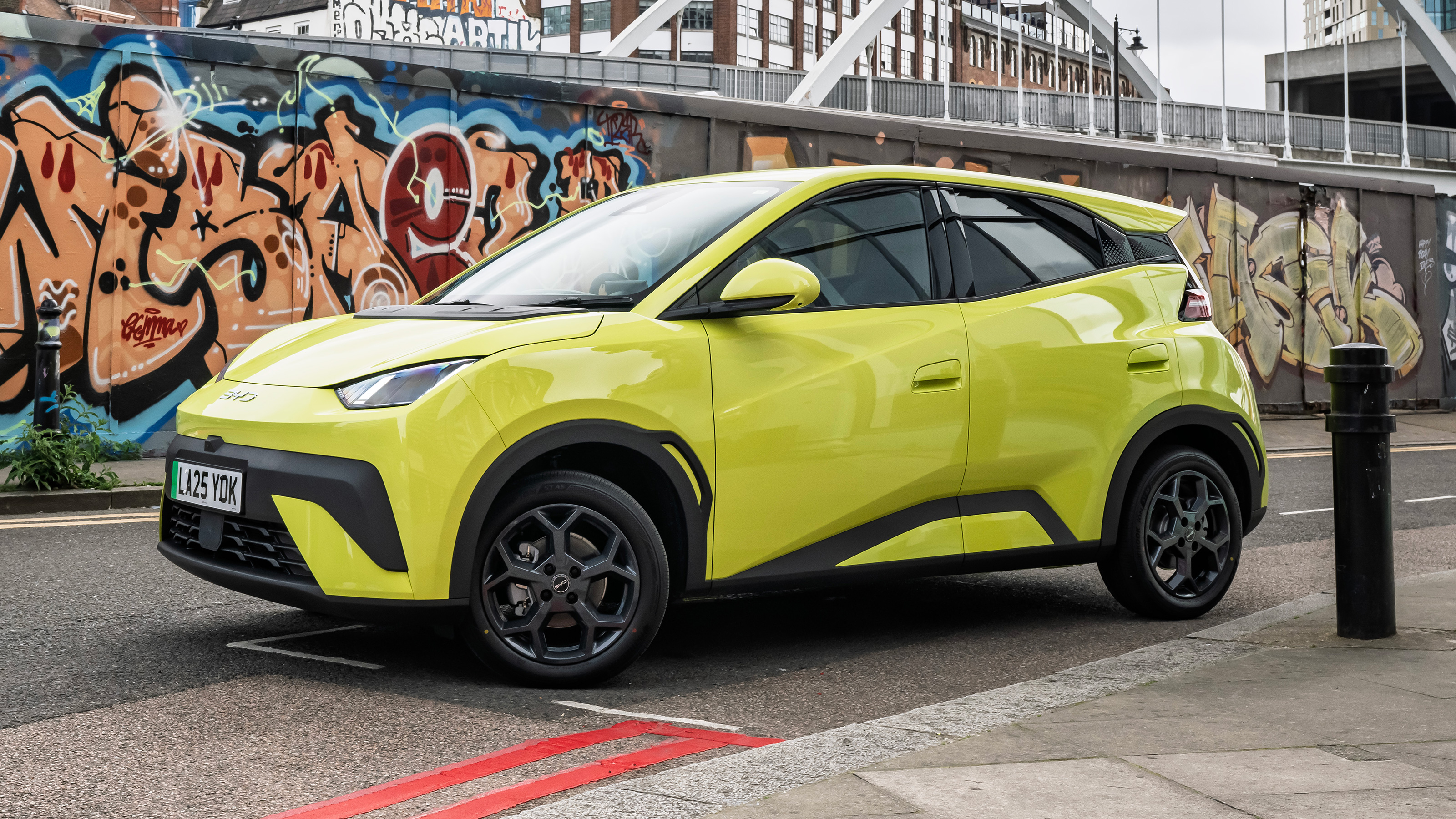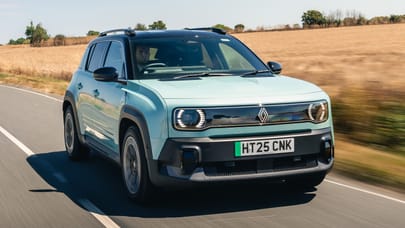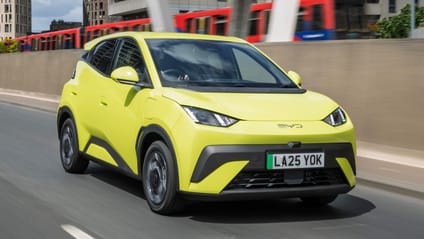
Good stuff
Full ADAS and big screen on all trims, efficient, roomy for four
Bad stuff
ADAS and screen both need major software changes, bouncy ride, noisy cruising, only four seats
Overview
What is it?
One of the cheapest electric superminis. And for buyers coming out of a three year old Skoda Fabia, the equipment list will feel like science fiction.
It's kitted out with a full suite of connectivity and driver assist. You can unlock and drive it from your smartwatch, and send a link to a friend so they can do it too. External power means you could run a small cook stove in the wild. All of which is right there with the £18,650 base model.
It comes from BYD, a brand with mushrooming sales and a colossal footprint. Shortly after launch, manufacture of the Dolphin Surf moves to a vast brand-new plant in Hungary.
You could accuse BYD of bait and switch with that entry price. It's for a relatively small battery car with just 137 miles of range. Fine as a commuter car, but you'd soon tire of motorway work: call it half an hour of charging for every hour at 70mph. So you're nudged into the middle Boost trim, which ups the electric range to 200 miles. But it costs another £3,300.
That said, we suspect BYD knows this is the one you want, so at launch there's a deposit contribution bringing the Boost as close as £10 a month more on PCP than the small-battery Active.
Rivals begin with the Dacia Spring and Leapmotor T03 at the bottom end. Although they're cheaper, they're smaller. Heartland rivals are the Stellantis pair, the Fiat Grande Panda and Citroën ë-C3. At the top of the Dolphin Surf range you draw level with the base Renault 5. Which is a problem for BYD.
How big is it?
It's not quite a supermini because it's narrow, so fits only two abreast in the back. Same as the Hyundai Inster. And it's tall, so on its little wheels it looks a bit gawky. It's 4.0 metres in length, a squeak longer than a Toyota Yaris. EV-native underfloor design and the tall roof help with interior space. There's plenty of legroom in the back, and a deep boot.
But a ‘city car’ is the bus. Surely this needs to be more than an urban runabout?
Fair point. And to look at the spec, you might think the bigger-battery version will tackle proper journeys. First, its space means no-one is going to get cramp or face a Ryanair-style baggage policy. The seats are comfy and the stereo is fine.
But the screen system will drive you bananas. Not least because unless you use Spotify (no other music source) you can't have any kind of navigation indication displayed at the same time as the music track name. So we were endlessly swiping and jabbing between the two display modes.
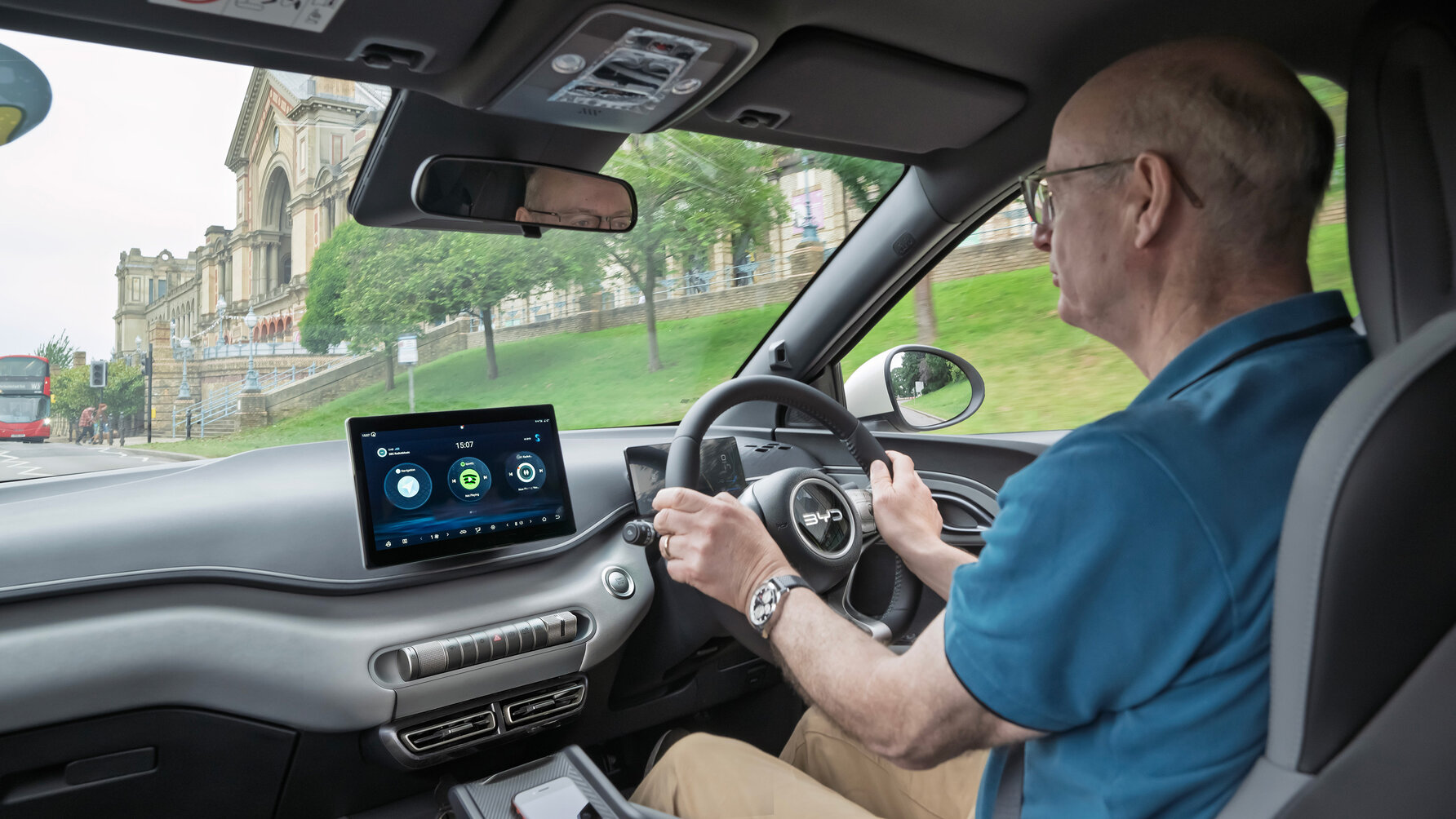
More fundamentally, the ride isn't great, with turbulent low-speed bounce giving way to a float on faster bumps. On a motorway you're assailed by tiring wind noise. The ADAS features aren't much help. And unless you've bought the relatively expensive Comfort spec, which has more power, you'll be mashing the accelerator to accelerate up a slip road. On the bright side, this meek performance is a key to its real-world efficiency.
Numbers then?
The Active spec has a 30kWh battery giving 137 miles WLTP. Its 89bhp motor manages 0-62mh in 11.1 seconds.
Boost ups the battery size to 43.2kWh, and range is now 200 miles. Same motor as before. But performance dips a little because of extra weight and perhaps its larger tyres (on 16s not 15s) gearing it up. It's 12.1s 0-62mph. Sorry, but it feels slower than that.
For extra poke, get the Comfort, which has the Boost's battery but a usefully spicier 156bhp, cutting the 0-62mph to 9.1s. Range drops marginally to 193 miles WLTP. On a motorway the real drop will be more, unless you can resist using the extra power to hit the overtaking lane.
That bigger battery charges at 85kW peak, for a half-hour 10-80 per cent top-up. Both batteries are BYD's robust and cost-efficient LFP chemistry, so you won't harm them by frequently discharging going close to flat and back to 100 per cent. Use the capacity you pay for.
Our choice from the range

What's the verdict?
Can a million drivers be wrong? In China and South America, total sales of this car – known as the Seagull and Dolphin Mini – have already sold that number. But BYD took a while to intro it here, to revise the structure and safety systems in pursuit of all five EuroNCAP stars (the actual test isn't published as we write), and improve the sense of quality.
Both those things are admirable. The cabin space and seat comfort are excellent. People are going to look at the rest of the equipment and wonder why the Citroen and Fiat rivals are so sparse.
But truth be told we found much of the Dolphin Surf's fancy tech – the display system and driver assists – annoying rather than helpful. We'd likely soon default to phone mirroring and, y'know, driving.
And when driving we'd notice the lack of polish and engagement. Small cars should be cheeky fun. This is off-target.
The Rivals
Trending this week
- Car Review
BMW iX3




